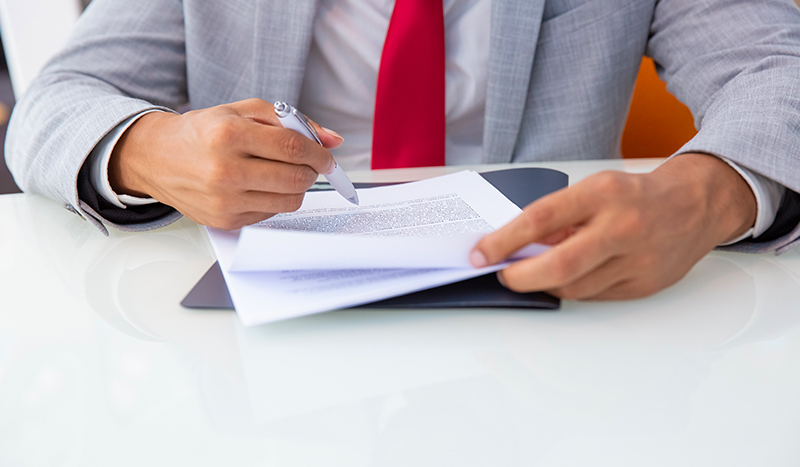In today’s evolving regulatory landscape, businesses can no longer afford to take a reactive approach to compliance. From financial institutions to real estate firms, early compliance is not just a legal necessity—it is a strategic advantage. Organisations that proactively align with regulatory requirements minimise risks, protect their reputation, and ensure smooth business operations.
Enhance Business Reputation and Trust
A company’s reputation is one of its most valuable assets. Non-compliance can result in negative publicity, loss of customer trust, and even blacklisting by regulatory authorities. By prioritising early compliance, businesses demonstrate their commitment to ethical practices, fostering trust among stakeholders, clients, and partners. This proactive approach enhances brand credibility and long-term sustainability.
Ensure Operational Stability
Businesses that delay compliance efforts often face operational disruptions due to sudden regulatory changes or enforcement actions. Early compliance allows companies to integrate legal requirements smoothly into their operations, avoiding last-minute disruptions. This stability helps maintain business continuity and ensures a seamless experience for customers and investors alike.
Mitigate AML and Fraud Risks
For industries like banking, real estate, and financial services, Anti-Money Laundering (AML) compliance is critical. Early adoption of AML policies and procedures helps identify and prevent suspicious transactions before they escalate into major financial crimes. Companies that take a proactive stance on AML compliance reduce their exposure to fraud, regulatory scrutiny, and potential legal consequences.
AML Services for Startups: Why Early Compliance Can Save You From Legal Trouble
In today’s fast-paced business environment, startups are often focused on growth, innovation, and securing investments. However, compliance with Anti-Money Laundering (AML) regulations is an essential aspect that should not be overlooked. Ignoring AML requirements can lead to severe legal consequences, financial penalties, and reputational damage.
The Growing Need for AML Compliance
Money laundering and financial crimes have become major concerns for regulatory authorities worldwide. Governments and financial institutions have tightened their scrutiny, making it mandatory for businesses, including startups, DNFBPs and FIs to adopt AML measures. Non-compliance can result in heavy fines, restrictions on business operations, and even criminal liability.
For startups operating in high-risk sectors such as fintech, cryptocurrency, real estate, and e-commerce, the risk of being targeted by illicit actors is even higher. Establishing AML protocols from the outset not only ensures legal compliance but also strengthens investor and customer trust.
Consequences of Ignoring AML Compliance
Failing to implement AML measures can expose startups to numerous risks, including:
- Legal and Financial Penalties – Regulatory bodies impose strict fines and penalties for non-compliance, which can be devastating for businesses. By adopting compliance measures early, companies reduce the risk of financial losses and legal complications that can arise from non-adherence. Early compliance ensures that businesses meet legal requirements before enforcement actions are taken, saving them from unnecessary costs and potential lawsuits.
- Reputational Damage – A startup linked to money laundering can lose credibility and investor confidence.
- Operational Disruptions – Non-compliance may lead to regulatory investigations, account freezes, and business restrictions.
- Difficulty in Securing Investments – Investors and venture capitalists prefer startups with strong compliance frameworks to mitigate risks.
Key AML Services Startups Should Implement
To avoid these risks, startups should incorporate AML solutions tailored to their industry and risk profile. Essential AML services include:
- Risk Assessment & Policy Development Startups must conduct a risk assessment to understand their exposure to financial crimes and develop AML policies accordingly. A comprehensive AML policy includes customer due diligence (CDD), enhanced due diligence (EDD), and reporting mechanisms.
- Customer Due Diligence (CDD) & Know Your Customer (KYC) Implementing a robust KYC process helps verify customer identities, assess risk levels, and detect suspicious activities early on. Automated KYC solutions streamline the onboarding process while ensuring compliance.
- Transaction Monitoring Real-time transaction monitoring systems flag unusual or high-risk transactions, helping businesses detect and prevent money laundering attempts.
- Sanctions & PEP Screening Startups should screen customers against global sanctions lists and politically exposed persons (PEP) databases to avoid dealing with high-risk individuals.
- Suspicious Activity Reporting (SAR) Businesses must have mechanisms in place to report suspicious transactions to regulatory authorities, ensuring compliance with legal requirements.
- AML Training & Awareness Educating employees on AML regulations and red flags is crucial to maintaining a compliance-first culture within the organization.
Benefits of Early AML Compliance for Startups
- Regulatory Protection – Avoid fines, legal troubles, and operational disruptions.
- Enhanced Business Credibility – Build trust with investors, partners, and customers.
- Competitive Advantage – Demonstrating compliance can differentiate your startup from competitors.
- Scalability & Long-Term Success – A solid AML framework allows for smoother expansion into new markets and jurisdictions.
Stay Ahead of Regulatory Changes
Regulatory environments are constantly evolving, and businesses must keep pace with new laws and amendments. By implementing compliance frameworks early, organizations position themselves ahead of industry shifts, making it easier to adapt to future changes. This foresight ensures that companies remain competitive while avoiding the rush to comply with last-minute regulatory updates.
Why Affiniax as Your AML Compliance Partner?
At Affiniax Partners, our dedicated team offers comprehensive support in establishing a fully functional compliance department tailored to your business needs. From drafting robust Anti-Money Laundering (AML) policies aligned with regulatory requirements to assisting in the recruitment of skilled compliance professionals, we ensure that your organization is well-equipped to meet compliance standards.
Additionally, we help you select and implement the most suitable AML software based on the size and complexity of your operations. Our services also include facilitating your registration on the GoAML platform, a crucial step in regulatory compliance. Furthermore, we streamline your customer onboarding process by conducting thorough Know Your Customer (KYC) checks, ensuring adherence to due diligence protocols.
With our end-to-end solutions, your compliance framework will be structured, efficient, and fully aligned with regulatory expectations.
Conclusion
Establishing robust policies and procedures, as well as hiring a highly competent compliance team, is essential for startups and Designated Non-Financial Businesses and Professions (DNFBPs). Compliance should never be treated as an afterthought, as failing to implement a strong regulatory framework can expose businesses to severe financial penalties, reputational damage, and even legal consequences.
Startups and DNFBPs often underestimate the importance of compliance, assuming it is only relevant for large corporations. However, regulatory bodies, particularly in jurisdictions with stringent Anti-Money Laundering (AML) and Counter-Terrorist Financing (CTF) regulations, closely scrutinize all entities, regardless of size. Failing to establish clear policies and procedures from the outset can result in operational inefficiencies, missed regulatory deadlines, and vulnerabilities to financial crime risks.
Hiring or outsourcing a qualified compliance team should not be delayed. Compliance professionals bring specialized knowledge of evolving regulations, risk mitigation strategies, and best practices to ensure that a business remains legally compliant. For startups and DNFBPs that may lack in-house expertise, outsourcing compliance activities can be a cost-effective and efficient solution to meet regulatory requirements without compromising on quality.
Ignoring compliance or treating it as a secondary concern can have dire consequences. Non-compliance can lead to financial penalties, business license revocations, and loss of investor confidence. Regulatory breaches, even if unintentional, can erode trust with customers and business partners, ultimately affecting long-term growth.
By prioritizing compliance early on, startups and DNFBPs can build a solid foundation for sustainable growth, protect their reputation, and ensure they operate within legal boundaries. Investing in a skilled compliance team—whether in-house or outsourced—is not just a regulatory necessity but a strategic move that safeguards the future of the business.









